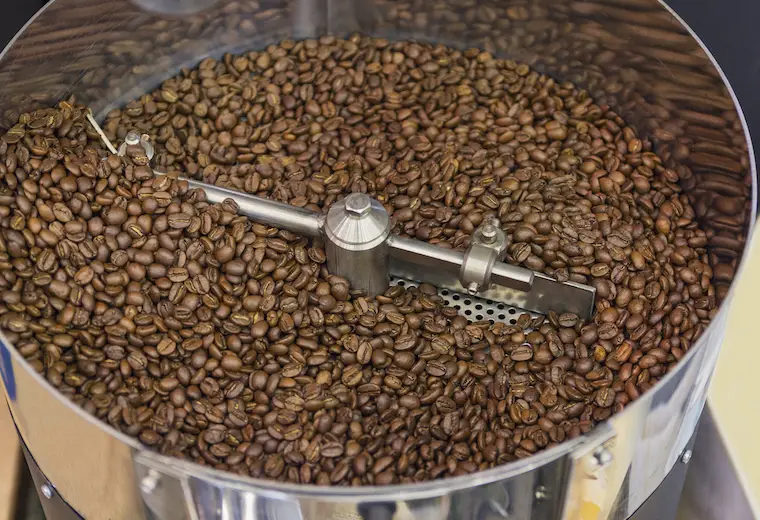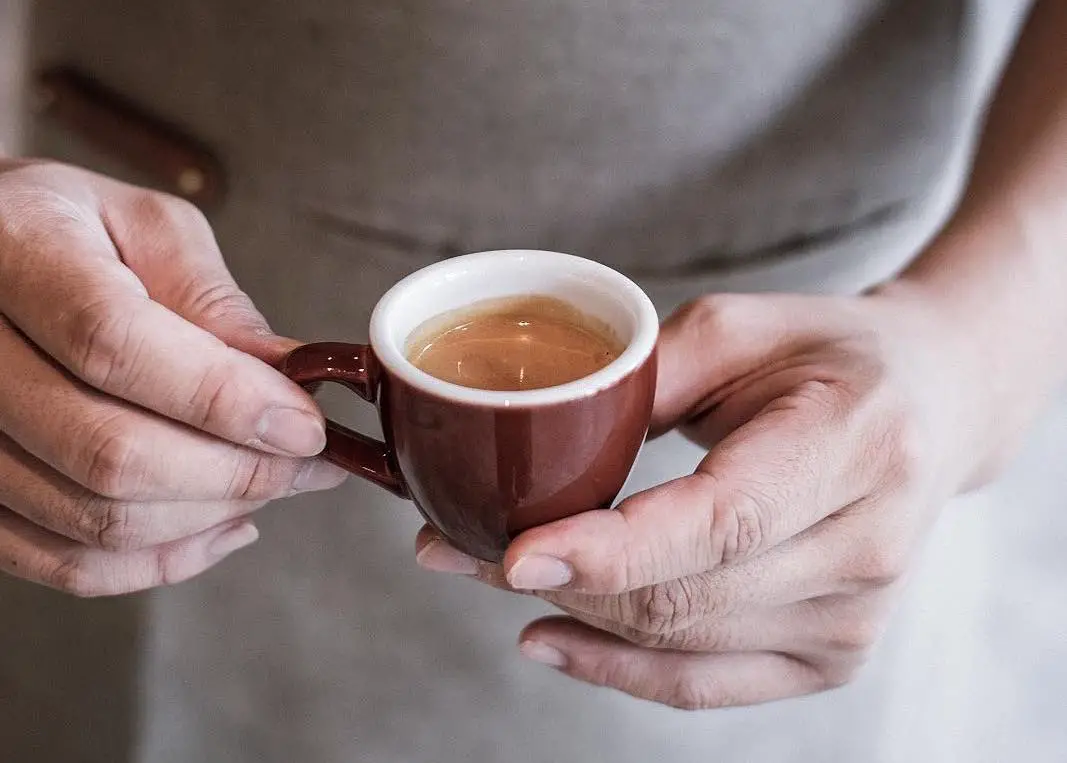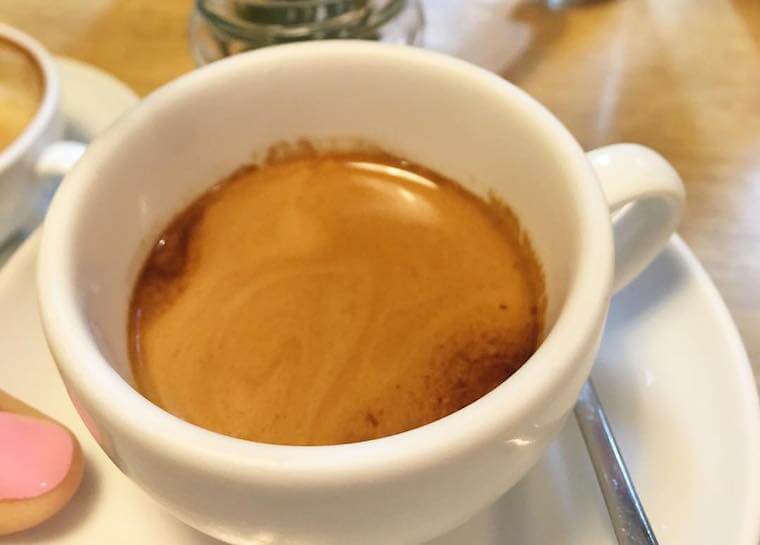“Errr…it’s kinda like… bitter, or something?”
If your attempts to explain what makes good coffee sound a bit like ^^ then steel yourself… we’ve got a few harsh truths to get through today.
In this article, I’m going to explain what makes good coffee, and what makes bad coffee.
And you’ll get my best tips from 15 years of brewing so your coffee ends up on the good side. I’ll even show you one trick that will mean you never buy a mediocre bag of coffee beans again.
Good coffee vs bad coffee
Good coffee comes down to three things. Taste, aroma and mouthfeel. You want the taste to be smooth and balanced, and great coffee might highlight tasty fruity, floral or sweet notes. These notes are often present in the smell of the coffee, too. And you want a nice texture when you drink. A full-bodied coffee that’s satisfying in the mouth is the ideal as well. A really good coffee can be taken with only a little milk, or even black.
And in fact, one of the easiest ways to tell if a coffee is good, is comparing it to bad coffee.
Bad coffee can come in a number of different forms. The taste can be off, with bitter and sour flavors giving a deeply unpleasant astringecy when you drink. The brew can end up too watery and thin, likewise it’s possible to make a brew that’s full of grit or fine coffee grounds. Bad coffee is often served with mountains of sugar and cream. This, you know, covers up a few problems.
What makes a coffee good or bad
We can narrow down good (or bad) coffee to two things, and two things only. Firstly, you’ve got your beans. High quality coffee beans are a must to make good coffee. And in fact, if you get the right coffee beans, it’s hard to mess up from that point. In just a second, I’ll give you my trick for quickly finding good quality coffee. Even if your not too experienced in this whole fancy coffee lark.
The second thing is how you brew your coffee. Like I said, the beans are more important. But if you can nail how you brew a coffee, this can take your coffee from “good” to “why do I keep receiving marriage proposals whenever I make someone a coffee?”
(Possible exaggeration. But you get the idea.)
How to tell if coffee beans are good
Let me fill you in on a little secret. This baby will take 10 seconds, and tell you if the coffee beans are good or bad. Here it is…
Hold your bag of coffee in your hands and look it up and down, front and back. You’re searching for a “roast date”. It’ll be a small date, maybe on the back or side. And maybe the words “roast date” next to it. And it tells you the exact day your coffee was roasted.
If you can see a “roast date” on your packaging, that’s a great start. It means the coffee was roasted with an eye on freshness, because they’re letting YOU, the buyer, know how fresh the coffee is. And it also means, with 99% certainty, that they care about the quality of the coffee.
We’re not stopping there, though. That roast date should be in the last 15-30 days. That’s because the really good stuff goes stale quick. Sure, you can drink it. The coffee won’t go “off”. But the quality will nosedive after this point.
What you really want is coffee that’s been roasted a few days ago, like two or three. That’s when you start to get the fresh stuff. The really good coffee.
No roast date on the packaging? Chances are that’s cheap, mass-produced stuff. It’s the kind of coffee you get in grocery stores that’s been sitting in warehouses for months on end. Drinkable, sure. But anyone who’s dipped their toe into the world of coffee even a little bit will be steering WELL clear.
This simple trick is SO useful. Seriously, next time you’re buying coffee, look for a roast date. You might just be amazed at the kind of delicious coffee you’ll start brewing.
The 4 things people do that ruin their coffee
Ok, look at you, quality coffee beans in hand. But those Costa Rican Tarrazu beans, tasty as they are, ain’t gonna brew themselves. And this is where the wheat and chaff get separated. So let’s look at 4 ways you can still mess this up.
Problem #1 – Don’t grind fresh.
Think back to when you bought those coffee beans. Did you go for the “preground” option? That’s when they grind it for you. Saves you the hassle, right?
Problem is that the instant you grind your coffee it starts losing freshness. Your coffee will taste worse inside an hour. Give it a day and those poppin’ tastes will be flat and lifeless. The solution? Get yourself a coffee grinder.
Problem #2 – Use a cheap grinder.
So I used to use this coffee grinder at my old gig. It cost north of $3000. It was a beaut, but why did it need to cost that much?
Well, it needed to be reliable and fast, sure. But it absolutely needed to grind the coffee up to a consistent size. That means each piece of ground coffee is about the same. No massive chunks, and no tiny fines. A consistent grind size is key to smooth, balanced flavors. And also key to avoiding bitter and sour flavors.
And the problem is a lot of these $15 grinders, you know, the ones you get on Amazon, are barely worth the metal they’re made from. They’ll give you crazy grinds that’ll ruin your coffee. A cheap grinder is a one way ticket to bittersville. Do you research. Get something good.
Problem #3 – Eyeball it.
Throw a few beans in a grinder. Crunch ’em up. Now mix ’em with some hot water, in a french press or something. BAM. You’ve brewed coffee.
If that sounds familiar, then you’ve got some work to do. The problem with eyeballing your brew is coffee is a finicky mistress. Overextract and you’ll let tons of bitter flavors into your drink. Here’s what I do (using a text document):

Now, I’m not saying you have to turn into a big nerd like me. But try remembering a few key things about your brew, like how much coffee you use, how much water you use, how long you let it brew for… Then you can adjust and improve.
And when you really nail it? You can replicate the damn thing. Perfect coffee. Over and over, whenever you want it. This is literally how every single pro gets to that level, not by eyeballing, but by being careful with the amounts and times.
Problem #4 – Use overroasted coffee.
Dark roasts are nice, some of the time. The charry, burnt flavors and kinda tasty. Kinda interesting.
But, and this is a big one, they don’t taste of the coffee. If you really want to taste the lush, delicious flavors inherent in the coffee, you’ve gotta get a lighter roast.
Medium roast is fine, light roast can be cool too. With any of these lighter roasts you’ll actually be tasting more of the coffee bean, and you’ll be getting those fruity, sweet, floral notes that are so good.

Conclusion
If there’s one thing I want you to take away from all this, it’s this. Start buying good coffee!
A move to high quality coffee beans from a roaster who know their stuff is huge. The other stuff, the brewing and everything. You can learn that along the way.
So how do you get started? Well, these days there’s quality roasters everywhere. Here’s my piece on how to find them, but you can just use Google. And there’s plenty of good roasters who’ll deliver too.
Pick a coffee you like the look of, and get going. Not much more to it than that.
Happy brewing!



1 Comment
Thanks for the tips! Just go into “third wave” coffee and lovin’ it. Just started to actually prefer my coffee black. Now with the creamer it feels too heavy and like dessert. I used to just chug it as it cooled down, now I take my time with it. Pour over is my favorite way to brea now.